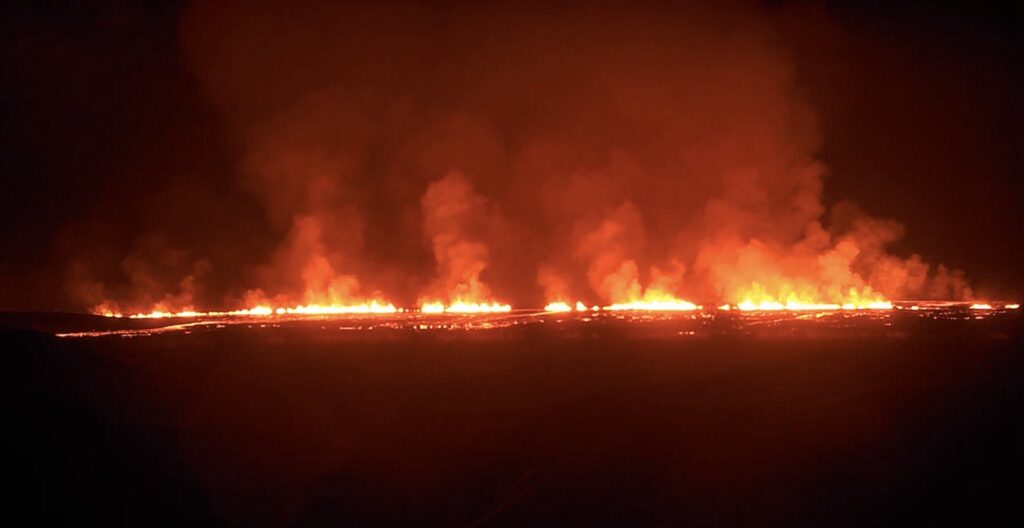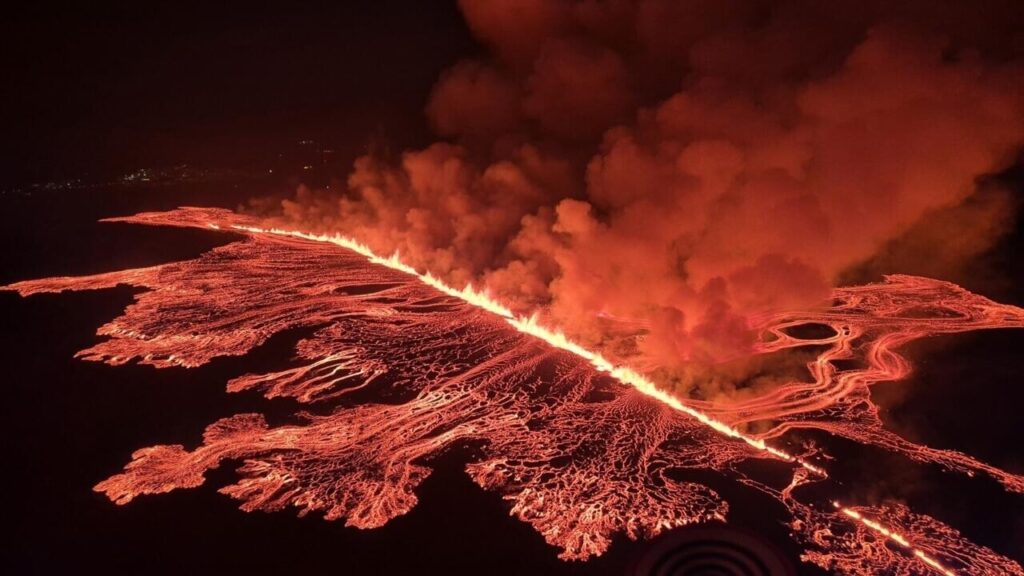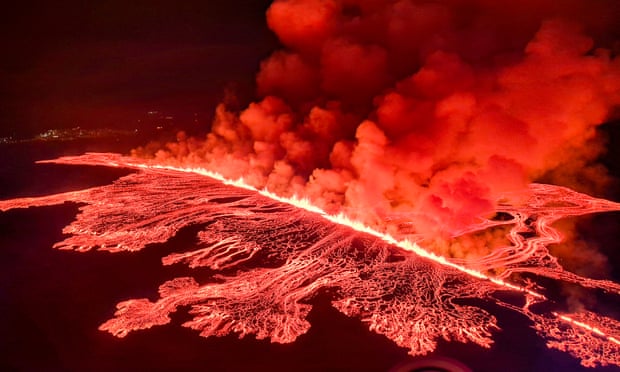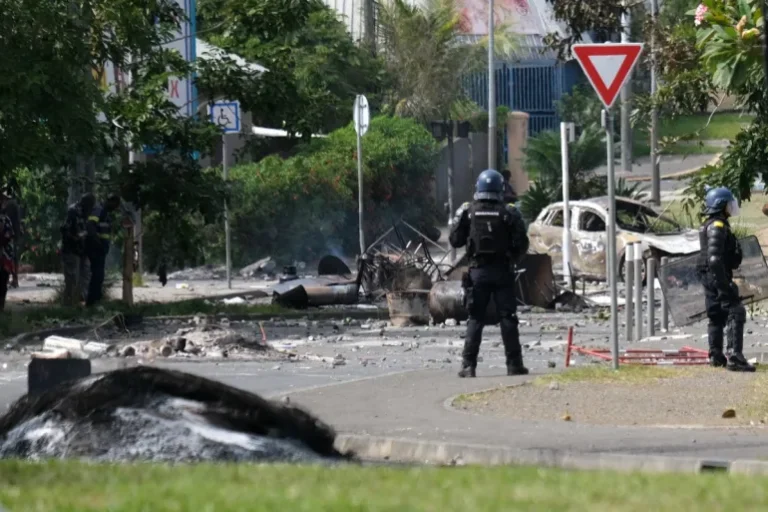Iceland Declares State of Emergency as Volcano Erupts for Fourth Time
Icelandic authorities have once again declared a state of emergency as a volcano on the Reykjanes Peninsula erupted for the fourth time since December, sending plumes of orange lava into the air and prompting evacuations from nearby towns. The eruption, which commenced late on Saturday, has sparked concerns over infrastructure damage and raised fears of further volcanic activity in the region.

The Icelandic Meteorological Office (IMO) issued warnings prior to the eruption, noting heightened seismic activity on the Reykjanes Peninsula since October. Live footage captured the dramatic scenes as lava flowed between Stora-Skogfell and Hagafell mountains, creating an ominous glow against the night sky. The eruption site lies near the town of Grindavik, which has been subject to multiple evacuations in recent months due to volcanic activity.
While the initial lava flows were powerful, authorities have reported a decrease in activity around the fissure, though concerns persist as lava continues to advance towards Grindavik’s eastern defenses. The nearby Blue Lagoon luxury geothermal spa has closed its doors as a precautionary measure, highlighting the disruptive impact of the eruption on local businesses and tourism.

Iceland, renowned for its geological activity, boasts over 30 active volcanoes, making it a prime destination for volcano tourism. However, the current eruptions underscore the risks associated with living in such a volatile environment. The 2010 Eyjafjallajokull eruption serves as a stark reminder of the potential disruptions volcanic activity can cause, grounding flights across Europe and impacting global travel for weeks.
Scientists fear that the current eruptions could persist for decades, with ongoing seismic activity indicating the potential for further volcanic events in the region. Icelandic authorities have initiated measures to mitigate risks to homes and critical infrastructure, including the construction of dykes to divert lava flows away from populated areas.
Despite the challenges posed by the ongoing eruptions, Iceland’s experience in managing volcanic activity positions the nation to respond effectively to the current situation. However, concerns remain about the potential impact on livelihoods and the environment, with fears of dangerous gases and small explosions if lava comes into contact with seawater.
While no confirmed deaths have been reported, one individual was declared missing after falling into a fissure caused by the volcano. The situation continues to evolve, with authorities closely monitoring developments and coordinating response efforts to ensure the safety of affected communities.








